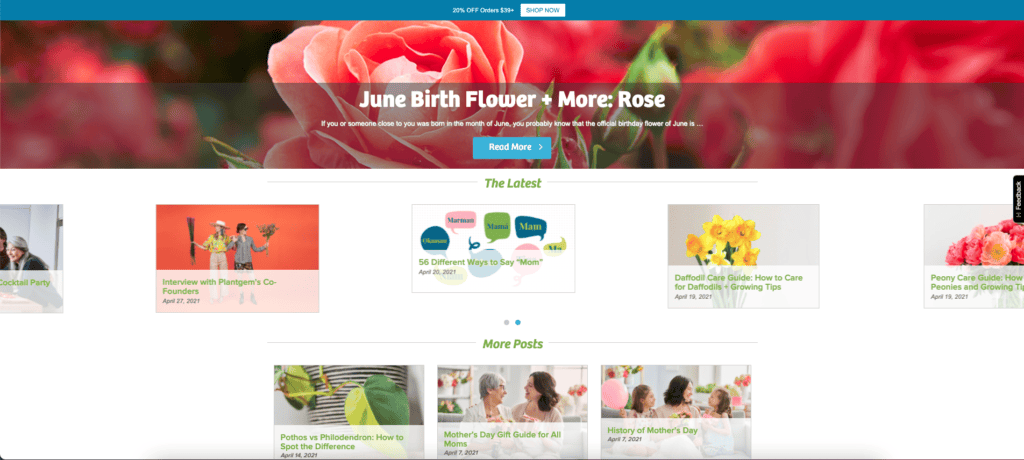Wondering if your ecommerce brand needs a content marketing strategy? The simple answer is yes. Content marketing is a strategy to share valuable, relevant, planned content to attract your target audience. It builds a connection, provides useful information, and helps to position your brand as a trusted authority.
Content planning allows you to take advantage and increase your search engine optimization (SEO), brand awareness, and building customer loyalty. These tactics are a big deal for ecommerce brands who focus on reaching their audience online as ultimately it can lead to more sales and an increase in revenue – total goals for most ecommerce brands.
What is content marketing?
Content marketing doesn’t directly promote your brand (in the same way that social media or paid advertising might). Instead, it aims to build trust with your target audience to help solve their problems and provide them with practical, relevant information.
Content marketing covers a lot of ground, and the content you invest in depends on who you try to reach. Some of the most common types of content marketing for ecommerce are:
- Blog posts
- Infographics
- Videos
- Ebooks
- White papers and reports
- Webinars
- Social media posts
- Case studies
- Email newsletters

Men’s retailer MR PORTER is an example of an ecommerce retailer that has invested in its content marketing planning by creating a men’s fashion and lifestyle blog called ‘The Journal.’ The posts don’t always directly promote MR PORTER’s products but provide a mix of tutorials, trends, and recommendations. This helps with brand awareness and generating sales, plus authenticity and trust.

Another example is Snack box retailer Graze. The brand utilizes email marketing as part of its content strategy. They send out targeted offers, news, and information about their products to generate interest and sales. They often use discount codes or purchase offers to incentivize click-throughs.
Why do you need a content strategy?
A content strategy helps you define your target audience, what they need to know, how you will reach them, and timelines. Being strategic is important to deliver real benefits and ensure your content does what it needs to.

Plant retailer, ProFlowers, shares in-depth content about flowers and horticulture. This resulted in 42% of organic traffic and helped them establish authority.
As mentioned earlier, content is also great for SEO, which is a vital tool for gaining customers through search engine results.
Huda Beauty has taken topics that their target audience is interested in, its keyword research, and gone for it when creating an SEO content hub. They share content on wellness, hair, beauty, skincare, makeup, and a few other things, blending trends and SEO for content that ranks and generates traffic.

This approach attracts people to the site, keeps them engaged, and encourages them to stick around and browse some products. This starts to build a brand experience for potential customers, with it feeling useful rather than overly salesy.
A solid content strategy will also generate leads through whitepapers, blog content, and calls to action. You can even sit it behind a link that captures email addresses to start building up a marketing database to reach out to.
Identifying key content trends for this year
There are some key content trends to be aware of when developing your strategy and carrying out your content plan. These trends will impact content this year, so it makes sense to incorporate them now:
- Google’s Helpful Content Update was introduced in 2022. It’s a change to Google’s ranking algorithm that rewards content where visitors have a satisfying experience with useful content written for humans first and search engines second. This means a better experience for the user and more traffic to your site if you’re writing content that resonates with your audience. This is essential when you’re writing content for an ecommerce brand.
- Thought leadership and personal branding are growing in strength online, and this means creating customized content that aligns with your brand and positions you as an authoritative, trusted voice. This can be done within a brand, as a standalone set of topics, or as a blend of the two. It generates traffic, raises awareness, and sets trends.
- AI content writing has been big news in 2023, with many brands looking at how this fits into their content planning or strategy. Of course, it has its limitations—and it’s likely Google’s Helpful Content update doesn’t like it—but many ecommerce brands are interested in how it can support their business goals.
Content planning: the next steps
If you’re looking to plan your content strategy, there are some key areas you should focus on.
Developing a clear content marketing goal
Having a clear content goal in mind is essential. You need to know and understand why you’re creating content for your brand to execute your plans, create content and analyze it against benchmarks. You can give your brand targets, a reason for creating the content, and what you want to gain from it.
Identifying your target audience
Understanding who you’re creating content for is crucial in ensuring that it resonates with them or solves their problems. That’s the whole point of creating content—to make it relevant to your target audience so that they find your content and move across to your ecommerce funnel. So mapping out your customer journey and working out the type of content you need is essential.
Determining the types of content
Following understanding your audience, you’ll also need to understand the type of content they want and what you need to invest in. For example, if your audience is Gen Z consumers, TikTok is probably the space for creating content. On the other hand, suppose your business only works with other companies, and they’re looking for data, stats, and business cases. In that case, a data-heavy whitepaper with original research might be the way to go.
Content planning and creating a content calendar
Content planning and a content calendar are essential parts of your strategy. They give structure and forward thinking to your content planning and allow you to be more reactive or proactive where you need to be. It’s the day-to-day backbone of the rest of your business and content.
How to create content
Creating content is different for every brand and each type of content. But working out a brief and a plan is the first point unless you’re going for some off-the-cuff, unplanned content that works on short-form video platforms like TikTok. This helps you clarify what you’re trying to convey and how to do it.
Content distribution
If SEO is the pull part of content marketing, then content distribution is the push. It’s a way of getting the content you’ve spent time and resources on so others can see what’s happening. This can be through social media, advertising, printed materials, or PR, which makes the content you’ve created go even further.
Measuring and analyzing your content marketing strategy
Go back to the goals you set at the beginning and check how your content performs against this once it goes live. You can use the tools with the platform, external tools, or something else to measure. What you measure depends on the content and the metrics that matter to your business – it might be clicks, views, interactions, users, purchases, or customer journeys.
Conclusion
Having a content strategy in place is essential to ecommerce marketing. The entire digital marketing cycle relies on content, engagement, and interactions, so this is something that you should focus on as part of your brand. It can help your brand drive sales and connect with your target audience.








